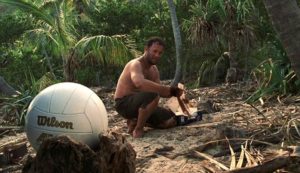09.14.17Practice on an Island

One of the things that people tell us they value most in our workshops is practice—the chance to rehearse and refine elements of your teaching technique in the safety and camaraderie of colleagues rather than in front of your third period math class. However, not everyone has the opportunity to practice with peers as often as they’d like. Over the last year our team has explored ways for teachers to get quality practice independently, including the development with our colleagues at Relay Graduate School of Education of 24 online modules that teachers can use to practice on their own. More on those in the next few weeks. In the meantime, my colleague on the TLAC team, Dan Cotton, has put together this reflection on engaging in quality practice on your own.
If you’ve been to one of our workshops or experienced a Plug and Play, then you know that practice is central to what we do. It’s practice that enables teachers to bridge the gap between seeing and discussing a clip of a great teacher to being able to execute a technique in their classroom with clarity and confidence.
Where a community of strong practice exists (in frequent PD, or coaching sessions, or PLCs), teachers benefit. But what if you’re a teacher on your own, striving to get better? How do you practice? What does it look like?
For an example of great on-your-own practice, click the link below to check out a clip of Troy Prep High School’s Preethy Gowrinathan. Preethy was working on Time the Name—sequencing each of her Cold Calls with Question-Pause-Name so that all students would be considering her question before she revealed who would be sharing their thinking. To prepare, Preethy scripted her questions, drafted the target answers she was aiming to hear, and then clicked on the video camera:
Preethy’s Time the Name Practice
For teachers looking for a model of how to practice on your own, three elements jump out from Preethy’s practice:
- All In: Preethy was in full teacher mode during practice. Practicing can feel awkward or silly at times—but we diminish the value of practice if we don’t go “all in.” Preethy practices as though her students are sitting in front of her in her living room. She uses her students’ names. She practices with the questions from her upcoming lesson. She even addresses some of the behavioral routines, like pencils moving, because she has a clear vision of what this moment will look like with students.
- Planning is Part of Practice: Preethy planned her practice and scripted her practice in advance. She even planned student answers so she could practice her responses to them.
- Film for Feedback: Just as great athletes film their practice so they see adjustments they want to make in the game, so too does Preethy. Filming her practice allows her to give herself feedback, and/or send it to coach or colleague for feedback.
Practice is the place to make mistakes and struggle, so we can perform our best when we are in front of our students. It’s also the place to nail it (as Preethy does) so that we enter the classroom as are our most confident, best selves.
Recently three members of our team had the opportunity to do a remote training of 50 Peace Corps staff spread across 12 countries in Africa, serving 3500 Peace Corps volunteers. We showed Preethy’s clip as an example of what great practice on your own looks like. We hope that whatever your role—teacher, coach, leader—Preethy’s work inspires you to pick something you want to do better, script your vision, flip on your video camera (if you’ve got one), and practice.
